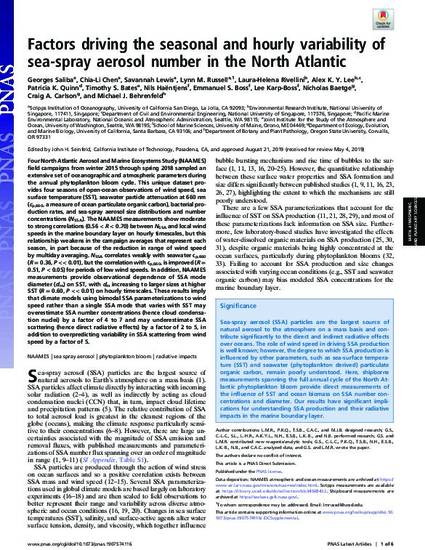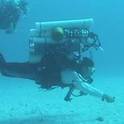
Four North Atlantic Aerosol and Marine Ecosystems Study (NAAMES) field campaigns from winter 2015 through spring 2018 sampled an extensive set of oceanographic and atmospheric parameters during the annual phytoplankton bloom cycle. This unique dataset provides four seasons of open-ocean observations of wind speed, sea surface temperature (SST), seawater particle attenuation at 660 nm (cp,660, a measure of ocean particulate organic carbon), bacterial production rates, and sea-spray aerosol size distributions and number concentrations (NSSA). The NAAMES measurements show moderate to strong correlations (0.56 < R < 0.70) between NSSA and local wind speeds in the marine boundary layer on hourly timescales, but this relationship weakens in the campaign averages that represent each season, in part because of the reduction in range of wind speed by multiday averaging. NSSA correlates weakly with seawater cp,660 (R = 0.36, P << 0.01), but the correlation with cp,660, is improved (R = 0.51, P < 0.05) for periods of low wind speeds. In addition, NAAMES measurements provide observational dependence of SSA mode diameter (dm) on SST, with dm increasing to larger sizes at higher SST (R = 0.60, P << 0.01) on hourly timescales. These results imply that climate models using bimodal SSA parameterizations to wind speed rather than a single SSA mode that varies with SST may overestimate SSA number concentrations (hence cloud condensation nuclei) by a factor of 4 to 7 and may underestimate SSA scattering (hence direct radiative effects) by a factor of 2 to 5, in addition to overpredicting variability in SSA scattering from wind speed by a factor of 5.
Available at: http://works.bepress.com/emmanuel_boss/44/
